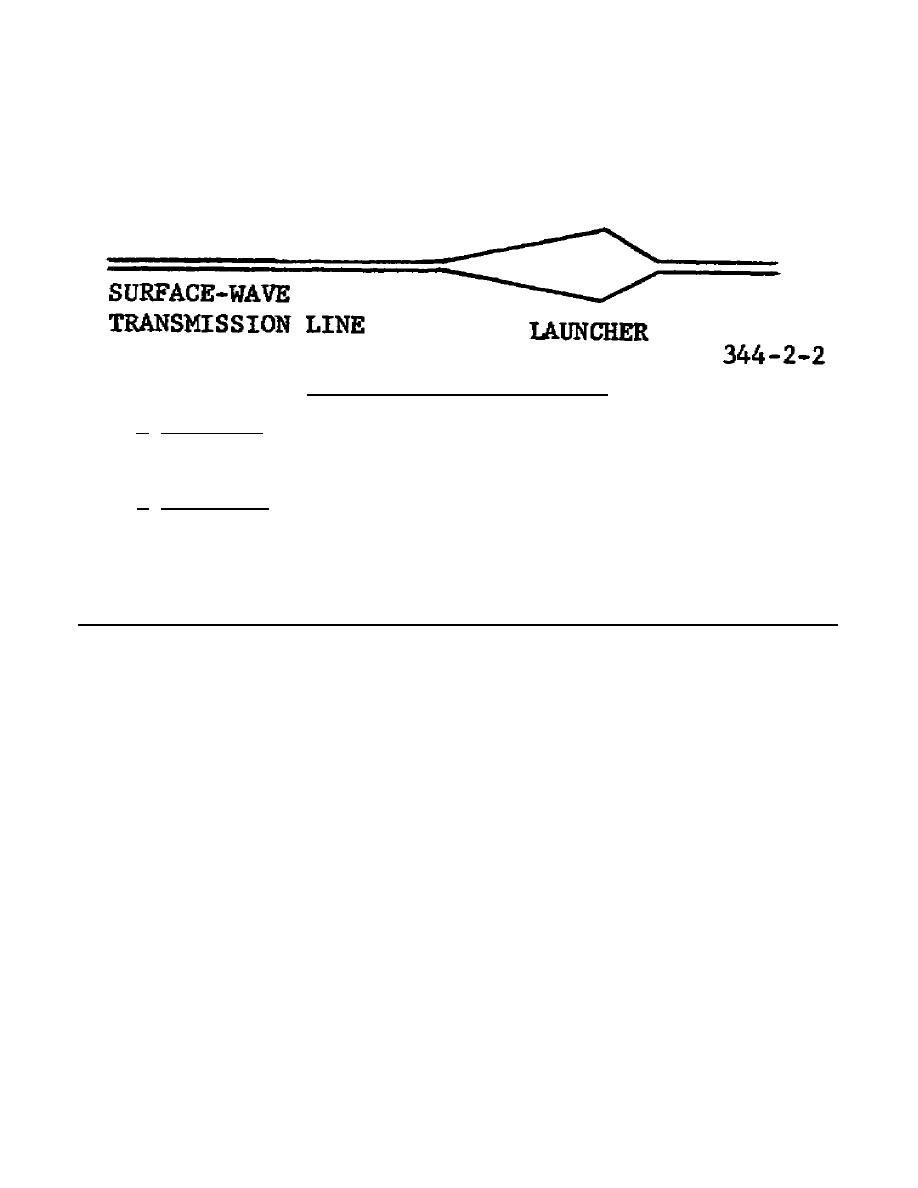
the impedance of the line is raised and the loss is reduced because less current is generated in the higher
impedance for a given power transmission. The SWTL has an impedance of 200 to 400 ohms and, therefore, the
loss in such a line is a fraction of that of an ordinary coaxial cable with the same size inner conductor. Compared
with a two-wire line of the same impedance and the same size wire, the loss is about half, because dissipation
occurs in only one wire instead of two wires. The dielectric coat introduces slightly greater loss than would be
expected from the open-wire line.
Figure 103. Transmission line with launcher.
d. Radiation Loss. There is a radiation loss inherent with the formation of surface waves. This loss
depends on the design of the launchers and their physical size, rather than the length of the line. For long lines,
the launching loss is of little importance, and the SWTL is superior to ordinary transmission line.
e. Climatic Effects. Being an open wave-guiding line, the SWTL is subject to weather conditions, but to
a lesser degree than open two-wire lines. Rain and dry snow have little effect. Droplets of water on the line,
however, act as small radiating dipoles and increase the loss of the line. Such droplets form on lines that are
nearly horizontal, but there is no problem in vertical installations. The formation of ice is more serious and must
not be permitted. De-icing units are available for use in areas where ice is a possibility.
LESSON EXERCISES
In each of the following exercises, select the ONE answer that BEST completes the statement or answers
the question. Indicate your solution by circling the letter opposite the correct answer in the subcourse booklet.
1.
Waveguides are capable of handling more power than a coaxial cable because the waveguide
a.
has an arc-over path twice as long as the coaxial line's path.
b.
has less resistance than the coaxial line.
c.
has an inner coating of silver.
d.
does not use dielectric supports.
344 L2
97



 Previous Page
Previous Page
